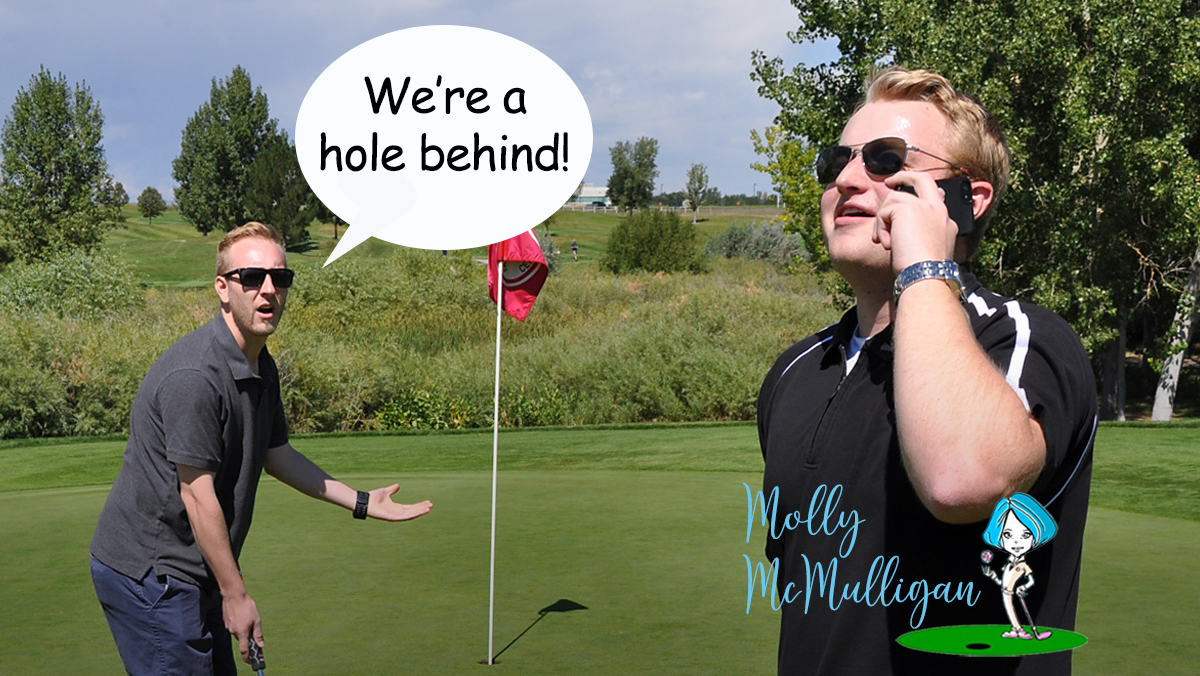Dear Molly: I always point out when my group is falling behind, but no one seems to want to hear it and I find myself rushing for the whole foursome. Is there a good way to say that we should pick up the pace? Or should I just zip it?
Just the other day I was the only walker, the shortest hitter, and it was hot. At the turn, I asked the cart drivers to please, after we tee off, just go to their drives, wherever they ended up, and play while I walked and prepared for my shot. One complied. The other would drive the cart up ahead of me and wait.
When we got to 15, the marshal nicely pointed out that the hole was open and asked us to please close the gap. Now everyone hustled to their balls and we played the hole in 10 minutes.
“WHY COULDN’T WE DO THAT ALL DAY?!?” I screamed. Well, it was a silent scream, because, let’s face it, no one wants to hear that. Try to push and pull your group along to keep up with the group ahead, and most players will either ignore you or hate you.
Rules official Karla Harding cues her group with “No one’s on the dance floor” when they get to the tee and the hole is open. And maybe that sounds friendlier than, “We’re behind.” An even better option may be to simply play cowboy and steer the herd along. My friend Judy says, “This happens to me all the time. So I’ll putt out and say, ‘I’m going to start walking.’ Or if someone else has putted out, ‘Hey Sally, let’s go to the next hole. ‘ ”
To me, this seems like a big responsibility, especially considering that golf is challenging by itself. “It stresses me out a lot,” Judy says, “but somebody has to address the issue. I would rather have the stress of trying to keep us moving than the stress of, ‘OMG, she’s so slow, I can’t stand it!’ ”
One of Colorado’s elite amateurs, Nick Nosewicz, has found another way of dealing with slow company. His dad, the famed Lenny of Lenny’s Golf and Ski, became so impatient with pace of play that he opted out of competitive golf and became a “local legend gambler hustler,” as his son puts it.
But Nick says, “For me, there’s so much to think about. I have a pin sheet in my pocket. I have a yardage book. I can recall what I hit on the previous hole or write down notes. I mean, watching a slow player take 10 practice swings would drive anyone crazy. So I occupy my time. I might get a pencil out, a piece of gum, look at my yardage, look at my pin sheet. And by the time it’s my turn, my decisions have been made, my club selection’s been made and my practice swings probably are already completed.”
Nick doesn’t take responsibility for moving his group along. By leaving that to a rules official or course marshal, he maintains his focus and enjoyment. He just sets a good example, following all the tips and strategies the CGA Monthly compiled in While We’re Young, Pace of Play Advice Part I (Recreational Golf) and Part II (Competitive Golf).
I’m giving this a shot. Want to join me? No screaming, silent or otherwise. No impatience, aggravation or distraction. We just go to our ball and get ready for our next shot. If we can’t get to our ball safely, we find something to do while we wait. Maybe we meditate. Maybe we think about how even our worst day on a golf course is better than our best day in a nursing home or hospital bed.
The words “not my problem” come to mind. How about we all take a deep breath and let our own pace of play do our talking? Give it your best shot – let me know how it goes!
Do you have a question about golf etiquette, golf relationships or the culture of golf in Colorado? Email it to Molly McMulligan, the CGA’s on-the-course advisor on having more fun on the golf course. Her creator, researcher and writer is golf journalist and CGA member Susan Fornoff, who doesn’t always agree with Molly but tries to take her advice.
MORE FROM MOLLY
Why do I have to give her strokes?







